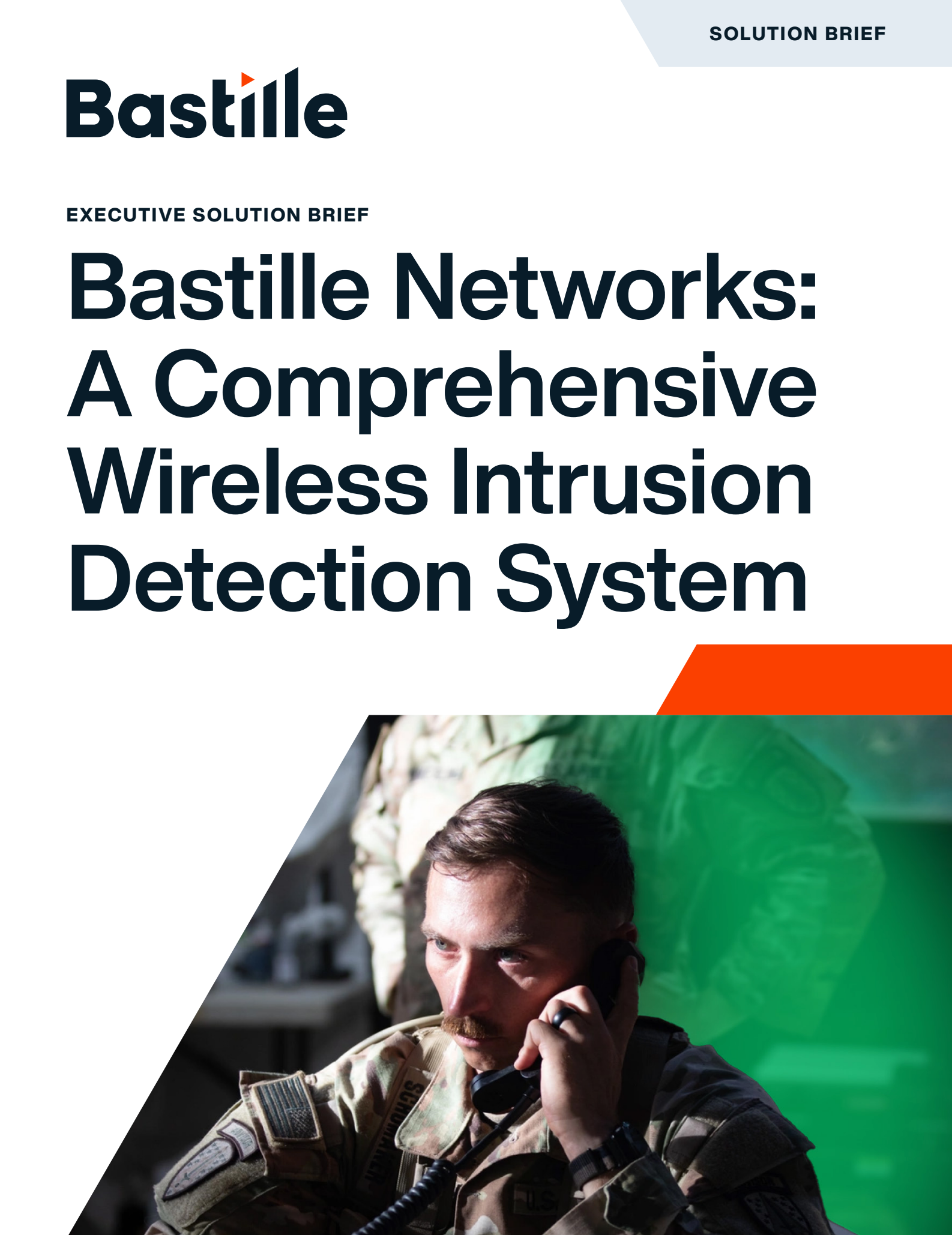Table of Contents
What is the Wireless Attack Surface?
Your attack surface isn’t just servers, domains, and apps. It also includes everything that speaks over the air, such as laptops, mobile phones, guest hotspots, IoT sensors, badge readers, smart locks, wearables, printers, headsets, and cellular modems—plus unauthorized or misconfigured devices you may not be aware of.
Wireless Attack Surface Management (WASM) is the continuous process of discovering, classifying, monitoring, and enforcing policy over RF-connected assets and behaviors to reduce risk and expedite response.
Key Elements of a Wireless Surface Attack
- Protocols: Wi‑Fi (2.4/5/6 GHz), Cellular (4G/5G), Bluetooth/BLE, Zigbee/Thread, LoRa/LoRaWAN, UWB, RFID/NFC, DECT, proprietary/industrial RF, SDR‑based signals.
- Behaviors: device-to-device pairing, tethering, personal hotspots, rogue AP creation, data exfiltration via wireless peripherals, out-of-policy cellular modems, and ad-hoc mesh.
- Locations: headquarters, data centers and AI facilities, manufacturing floors, hospitals, labs, warehouses, and executive workspaces.
Privacy note: Bastille measures RF emissions and behaviors in the airspace. We do not inspect device contents and cannot see what is on a phone. Our focus is on presence, protocol, behavior, and policy.
Why WASM Now
Wireless Attack Surface Management (WASM) is crucial because wireless networks are responsible for transferring sensitive data like usernames, passwords, and card details, making unsecured wireless networks a significant risk that can expose organizations to undesirable consequences and attacks.
In today’s hyper-connected world where organizations face constant cyber threats through expanding digital footprints that include IoT devices and wireless infrastructure, effective attack surface management provides continuous monitoring and proactive risk mitigation to prevent attackers from exploiting potential entry points before they cause significant damage.
- Explosion of wireless & IoT: Every badge reader, sensor, and smart device expands your exposure—even when not attached to corporate Wi‑Fi.
- Bypass of traditional controls: Cellular, BLE, and ad‑hoc links can route around NAC, EDR, and network firewalls.
- Zero Trust & segmentation: You can’t segment what you can’t see. RF visibility adds the missing dimension to asset inventories.
- Compliance & assurance: Frameworks and regulators increasingly expect visibility into unmanaged devices, portable electronics, and airspace policy enforcement across sensitive areas.
Common Wireless Threats & Misuse
Unmanaged Endpoints
- Personal hotspots and tethering bridging trusted and untrusted networks
- Rogue access points and evil twins near sensitive areas
- Out‑of‑policy cellular modems on servers or lab equipment
Peripherals & IoT
- Wireless keyboards/mice used for injection or exfiltration
- BLE beacons and trackers moving in/out of controlled zones
- Zigbee/Thread smart locks or sensors pairing to unauthorized controllers
Operations & Safety
- Drones near perimeters or rooftop HVAC
- RF interference from unauthorized devices impacting critical operations
Forensics Challenges
- Lack of historical RF evidence makes it hard to prove when and where something paired, transmitted, or moved.
Bastille’s WASM Platform
Bastille gives you continuous RF airspace visibility—from discovery to enforcement—across all major protocols.
Core Capabilities
- Global Discoverability: Continuous identification of wireless devices and behaviors across Wi‑Fi, cellular, BLE, Zigbee/Thread, LoRa, UWB, RFID/NFC, DECT, and more.
- Accurate Classification: Device and protocol fingerprinting to differentiate laptops, phones, printers, wearables, sensors, and peripherals.
- Geolocation & Zoning: Area‑level location and movement mapping to understand where devices appear and how they move through facilities.
- Policy & Enforcement: Build policy by device type, protocol, or geofence location (e.g., No personal hotspots in the data hall). Receive prioritized alerts and optionally trigger controls via integrations.
- Historical Forensics: Time‑correlated trail of RF presence, pairing, and movement to accelerate investigations.
- Integrations: Feed SIEM/SOAR, EDR/NDR to enrich enterprise workflows.
What Bastille Does Not Do
- No device content inspection. Bastille observes RF signals and behaviors. We do not collect data from inside endpoints or phones.
How It Works
- Sensors capture RF activity across the licensed and unlicensed spectrum in your facilities.
- Signal processing & ML classification identify protocols, device classes, and behaviors such as pairing, tethering, and rogue AP creation.
- Airspace graph maps devices to location, relationships, and movements.
- Policy engine compares behaviors to your rules and raises actionable alerts.
- Dashboards & APIs provide real‑time views, historical queries, and integrations to your existing tools.
- Outcome: Security and facilities teams share a common, continuously updated view of the wireless environment to reduce blind spots and speed response.
Deployment Options
- Fixed sensors (on‑prem): Persistent coverage for campuses, data centers, manufacturing floors, or hospitals.
- Portable survey kits: Rapid assessments, events, executive protection sweeps, and new‑site commissioning.
- Cloud management: Centralized policy, dashboards, and APIs.
WASM vs. Wi‑Fi‑Only WIDS vs. External ASM
| Capability | Bastille WASM | Wi‑Fi‑Only WIDS | External ASM (Internet‑facing) |
| Protocol coverage | Wi‑Fi + Cellular, BLE, Zigbee/Thread, LoRa, UWB, RFID/NFC, DECT, proprietary | Wi‑Fi dependent | Public web assets only |
| Unmanaged/Shadow devices | Yes | Limited | No |
| Geolocation & zone mapping | Yes | Limited | N/A |
| Policy on pairing/tethering | Yes | Rare | N/A |
| Historical RF forensics | Yes | Limited | N/A |
| SIEM/SOAR/NAC integrations | Yes | Sometimes | Yes (different scope) |
Use Cases by Industry
Government & Defense
- Enforce portable electronic device (PED) policies and secure zones.
- Detect rogue APs, cellular modems, and out‑of‑policy pairings around sensitive areas.
Data Centers & AI Facilities
- Maintain a clean airspace in data halls; flag personal hotspots and USB cellular adapters.
- Baseline RF activity and detect anomalies during maintenance windows.
Healthcare & Hospitals
- Monitor unmanaged medical IoT and BLE wearables; enforce no‑pairing near ICUs.
Manufacturing & Industrial
- Track movement of wireless sensors and handhelds; detect unauthorized gateways on production networks.
Finance & Enterprise Campuses
- Reduce exfiltration risk from wireless peripherals; spot ad‑hoc networks in trading floors and executive spaces.
Utilities & Critical Infrastructure
- Identify long‑range RF (LoRa/Proprietary) and unauthorized repeaters near substations.
FAQs
How is WASM different from traditional Wi‑Fi intrusion detection (WIDS)?
WIDS focuses on Wi‑Fi networks. WASM spans all major RF protocols, unmanaged devices, and behaviors like pairing, tethering, and cellular usage, providing zone‑level context and historical forensics.
Do you inspect device contents or messages?
No. Bastille observes RF emissions and behaviors in the airspace. We cannot see what is on a phone or inside an endpoint. Our approach emphasizes visibility, policy, and forensics
Can Bastille detect personal hotspots and tethering?
Yes. Bastille identifies ad‑hoc networks, personal hotspots, and tethering behaviors and alerts when they violate policy or appear in restricted areas.
What about drones?
Bastille can detect some RF signatures correlated with drone control links and payload transmitters in the monitored spectrum, helping teams triage suspicious activity near perimeters or rooftops.
How precise is location?
Bastille provides zone‑level location and movement mapping suitable for security workflow and forensics. Precision depends on sensor density and RF environment.Which frameworks does this support?
Bastille can help demonstrate asset visibility and policy enforcement for programs aligned to common security frameworks. Your account team can map controls to your requirements.


